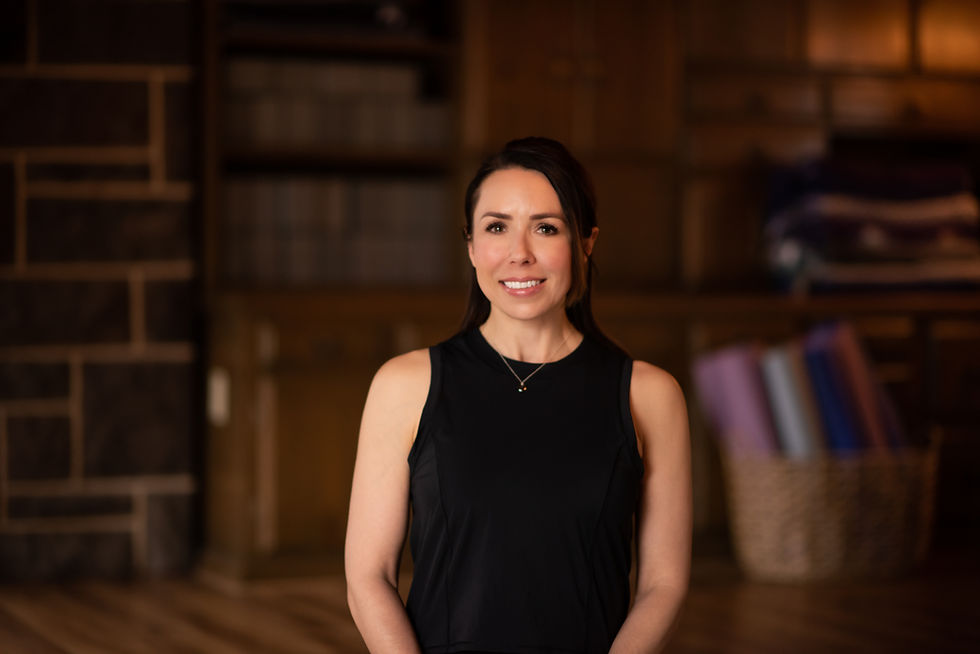How to prepare our bodies for fall and winter
- Meghan Eberly
- Oct 11, 2023
- 3 min read
Seasonal changes can trigger everything from migraines to asthma. As the days get shorter and the temperatures drop, how can we best care for ourselves?

Having grown up in the mountains of Utah, I’m no stranger to the pleasures of fall: the crisp mornings, the leaves starting to turn, the bright, cerulean sky. As a child, I distinctly remember noticing what the wind smelled like when the seasons changed. I was convinced the undertones of dirt and decaying grass I picked up on were a signal of the “moment” summer was really over. Standing in our driveway, leaves rustling on the asphalt, I always felt a surge of giddiness: fall was here.
According to a 2022 survey, 45% of Americans say autumn is their favorite time of the year. (1) The season is packed with festivities, pastoral abundance, and temperate outdoor experiences. But as we make space in our busy lives for themed parties and autumnal adventures, so too the cooling temperatures bring on a host of seasonal challenges including allergies, achy joints, and a higher likelihood of contracting viruses. (I’m sure I’m not the only one who’s rocked a Halloween costume while nursing a cold or hosted Thanksgiving with a headache.)
As fall enters her heyday and winter approaches, here are a few ideas to prepare your body and mind for the fallow season ahead. With a little tenderness towards ourselves, it could make the end of the year that much more enjoyable: cold and all.
Move

It sounds so simple, yet even small amounts of gentle movement in the colder months helps to keep joints lubricated and inflammation at bay. (2) A walk, a yoga class, or even some gentle stretching sessions throughout the day bring vital circulation to every system in our body. This, over time, eases pains associated with everything from stiff joints to arthritis.
Movement also has a mood boosting effect, with known benefits in helping to combat depression (3) and seasonal affective disorder. (4) If the winter months are usually challenging for you, a regular movement practice, however simple, can ease the difficulty of the shorter, darker days. If you’re not sure where to start, a gentle yoga or beginner’s yoga classes might feel like a good fit.
Rest

One of my least favorite markers of seasonal change are the twinge-y headaches that come in spring and fall. (5) Sometimes I walk around all day confused about why my head hurts, only to realize at 4 p.m. that it's been overcast and heavy feeling outside all day.
Sleep, for a long-time, has been a known antidote for migraines, (6) and most of us could benefit from the restoration that comes from turning in early or laying down when we can. If you find it hard to nap or get to bed early, there are plenty of activities that act as a downshift: watch a lighthearted movie, listen to soothing music, practice meditating for a few minutes, or even make a cup of tea and take a break from all other activities while you drink it.
Rest can also be a way to honor your body and the work it does to carry you through your life. All cultures around the world approach seasonal changes differently, and in the west, with the ability to stay as productive and “on” in our lives as we wish to (at all hours of the day, all months of the year), we may be disconnected from the rhythms our ancestors once tapped into so naturally. Setting aside time to check in and see what you need may be the antidote to some bigger wintertime struggles.
Do like the trees do

All trees, both conifers and deciduous, go through a process in autumn to prepare themselves for the cold ahead. They gradually take on less water, increasing the concentration of sugar (i.e. energy) in their cells to get them through the winter, and this concentration of sugar also prevents their cells from freezing. (7) In deciduous trees, this re-routing of resources is why they lose their leaves.
I don’t recommend dehydrating yourself or binge-eating sugar, but I do think trees inherently have a wisdom in their ability to take on less. They minimize external processes, drop what isn’t necessary, and focus on reserving their energy for what will best serve and protect them.
Like all beings that overwinter, we too can cut out the extra, focus on caring for ourselves, and emerge in spring with energy to re-bloom.
-Meghan
Sources:
(1) https://www.cbsnews.com/minnesota/news/fall-is-americans-favorite-season-survey-shows/#
(2) https://www.researchgate.net/profile/Terry-Ellapen/publication/320110602_Exercise-induced_physiological_lubrication_mechanisms_dissipating_arthritic_joint_pain/links/630f43091ddd44702123280d/Exercise-induced-physiological-lubrication-mechanisms-dissipating-arthritic-joint-pain.pdf?_sg%5B0%5D=started_experiment_milestone&origin=journalDetail
(3) https://jamanetwork.com/journals/jamainternalmedicine/fullarticle/485159
(4) https://www.tandfonline.com/doi/full/10.1080/22423982.2021.1906058
(5) https://www.sciencedirect.com/science/article/pii/S0160412019300662
(6) https://jnnp.bmj.com/content/jnnp/45/3/223.full.pdf
(7) https://www.nps.gov/articles/how-do-trees-change-in-the-fall.htm#




Great article especially the section on “Rest” which I feel is hard for women, of all ages, to do.
Thank you!
Love this. Meghan!